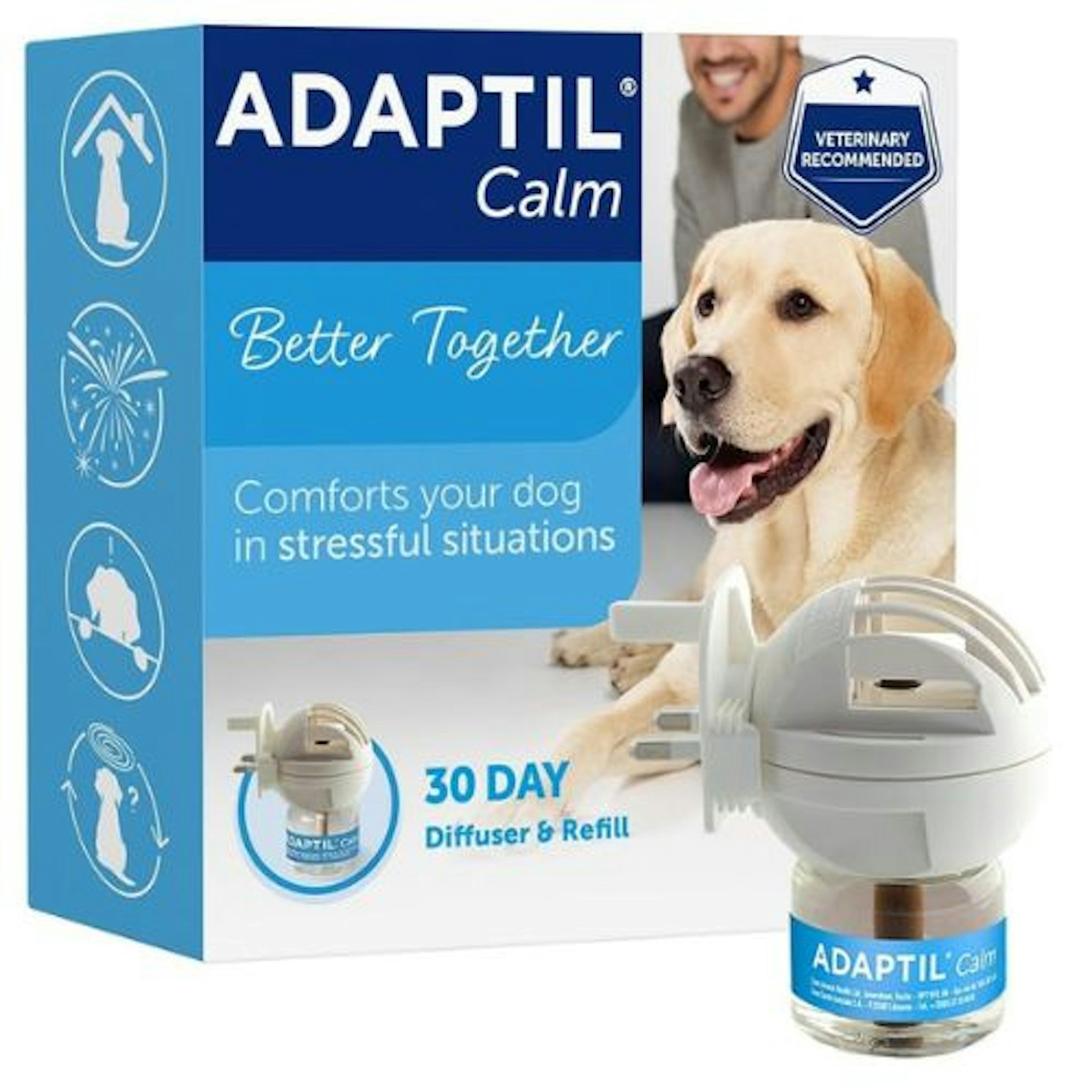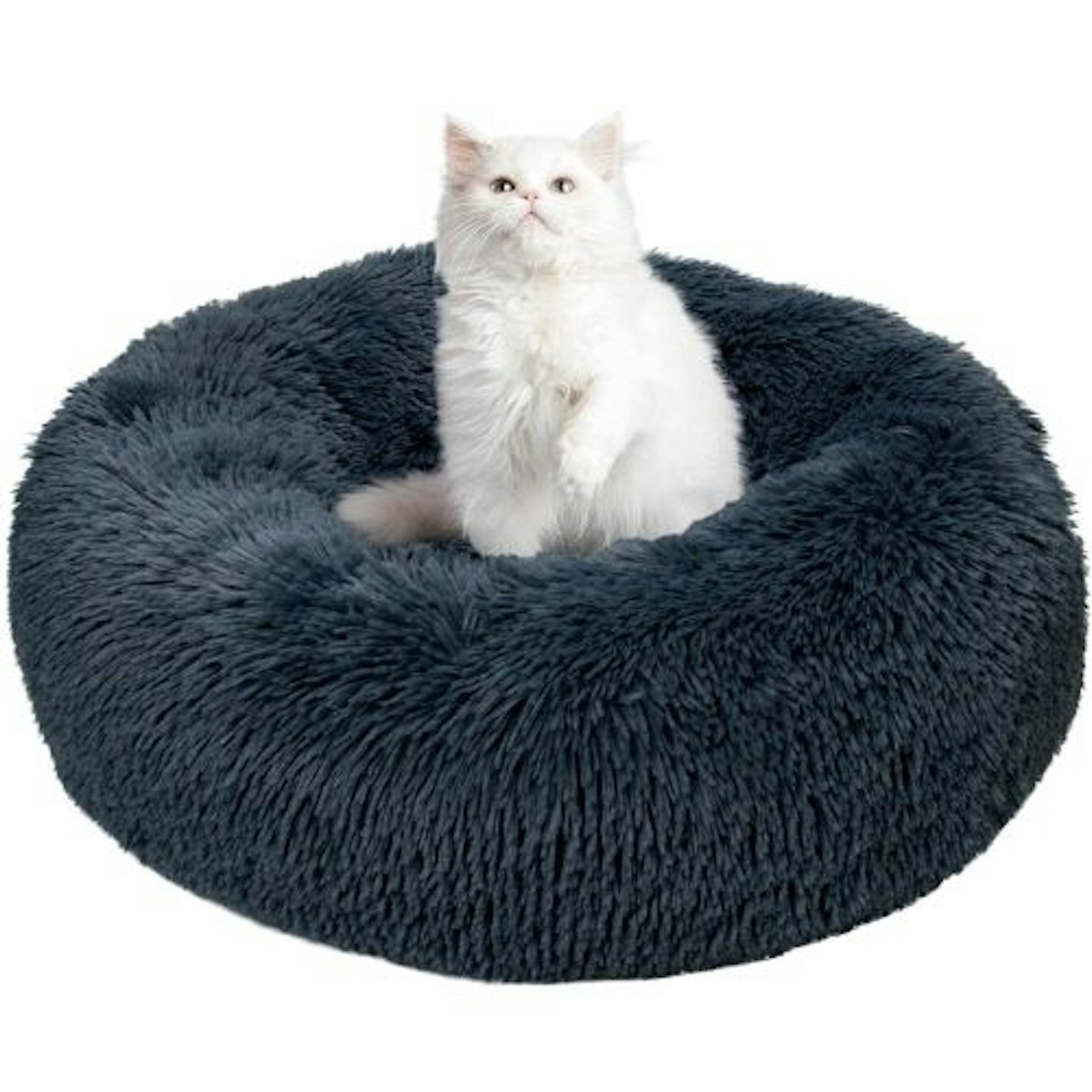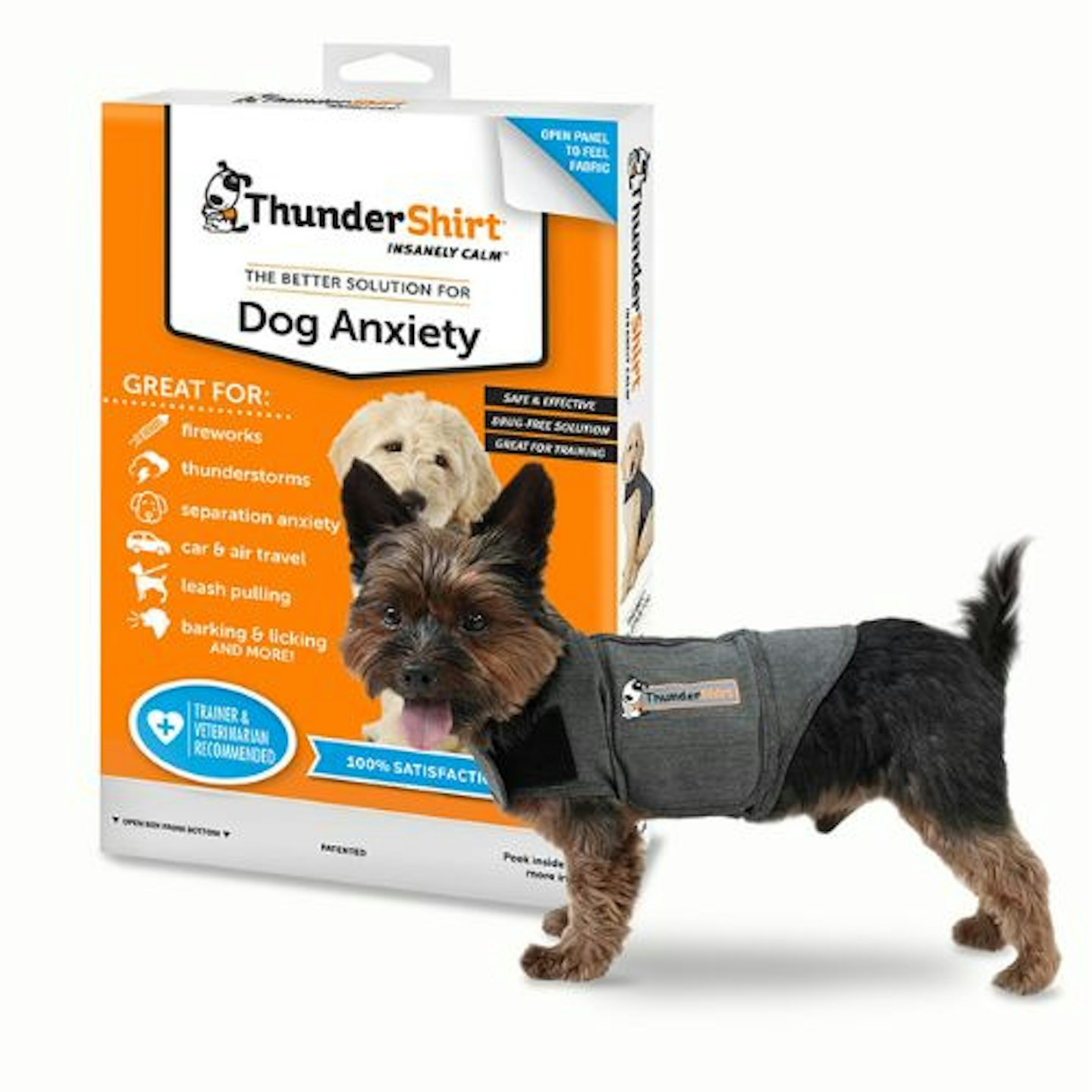Fireworks are much-loved by humans, but our furry friends aren’t quite as big fans. As you marvel at the sights and sounds of the bright colours that light up the skies, spare a thought for animals as fireworks exploding in the sky are often a source of stress and fear. The combination of sudden loud bangs and bright lights and colours in the sky can be particularly frightening for pets and, in particular, dogs.
According to research by the RSPCA, over 14 million Brits plan to hold private firework displays this Bonfire Night, so as you can imagine, concerned pet owners may be worrying about how their pets will react to this time of year. That’s why the RSPCA has launched its “Kind Sparks” fireworks campaign, which includes an interactive map that offers insights into just how strongly animals would be affected by private displays in your area. The tool also allows you to see the estimated decibel levels that animals will experience depending on their proximity to a fireworks display. The average for a fireworks display is 150 to 175 decibels, louder than an aeroplane take-off, which, as you can imagine, will be extremely loud for your pet’s sensitive hearing.
In addition to their interactive map, Lauren Bennett, an animal warfare expert at the RSPCA, has offered some tips on how to help your dogs (and cats) during fireworks displays and things you can do to keep them calm before the displays take place.
Why are dogs scared of fireworks?
"Dogs have exceptional hearing, about four times better than humans", says Lauren. "Your dog can hear you open the fridge when they are in a different part of the house, so you can imagine how sensitive their ears are to the sound of fireworks."
"About 45 per cent of dogs show fear during fireworks, the unpredictability and volume of the fireworks seem to be the biggest trigger. The dog can also feel trapped, like they cannot escape the noise, as to them it appears to be coming from all angles."
What are the signs that a dog is scared of fireworks?
These are the signs that your dog is scared of fireworks, according to Lauren and the RSPCA.
• Vocalising: Your dog might whine, whimper, bark, growl or cry.
• Hiding: Your dog might try to find a safe place to hide, like under furniture or in a closet.
• Panting: Your dog might pant excessively.
• Shaking: Your dog might visibly shake or tremble.
• Pacing: Your dog might become agitated and constantly move around.
• Clinginess: You might find your dog jumps up at you or seeks more attention from you.
How do I calm my dog down on fireworks night?
Before the fireworks season begins
"Planning ahead can help dogs cope with the fireworks season", explains Lauren. "Before fireworks season starts, provide your dog with a doggy safe haven. This should be a quiet area, so choose one of the quietest rooms in your home - a place where they feel in control.
"Train your dog to associate the area with positive experiences, e.g. by leaving their favourite dog toys there, but not imposing yourself at any time. Use a variety of chew toys, such as stuffed Kongs and chews. Swap them regularly, putting them away when not in use so that your dog doesn't become bored with them.
"With time, dogs can learn that this place is safe and enjoyable. When fireworks go off, they may choose to go there because they know they are safe in that place. It's important that your dog has access to this doggy safe haven at all times - even when you're not at home.
"Ask your neighbours and local community if they can pre-warn you that they are planning to let off any fireworks so that you can ensure you and your dog are fully prepared.
"Ensure that your garden is secure in case your dog is startled and tries to escape. It’s also worth checking that their microchip is up to date and that they are wearing a dog collar and tag that’s clearly labelled with your contact details."
When the fireworks start
Lauren shares this bullet-pointed list of things you can do to help your pooch when the fireworks actually start.
• Walk your dog during daylight hours to avoid times when fireworks are likely to be set off.
• Move your dog to the safe haven each evening before the fireworks begin. Provide toys and other things that they enjoy in the safe haven.
• Make sure there are things for you to do, too, so your dog isn't left alone.
• Close windows and curtains to muffle the sound of fireworks. Blackout your doggy safe haven, so they can't see any flashes outside.
• Put on some music or TV to mask the firework sounds.
• Ignore the firework noises yourself. Play with a toy to see if your dog wants to join in, but don't force them to play.
Pet calming products, recommended by Take a Break Pets
You can also get some pet calming products to help soothe your anxious four-legged bestie. Here are some of our favourites at Take a Break Pets, but we'd always recommend talking to your vet first to ensure they're suitable for your pooch.
Best pet calming diffuser
 ADAPTIL/Amazon
ADAPTIL/AmazonThis ADAPTIL Calm Home Diffuser emits a synthetic version of a natural pheromone that a dog’s mother would have produced to comfort their puppies. It’s designed to create a sense of security for dogs, helping them to relax and reducing symptoms of fear they may experience during fireworks night. Simply plug it into a socket in your living room, kitchen, or any other area that your hound will be spending a lot of time in during bonfire season, and it’ll work its magic to ease your pup’s anxiety so they’re less likely to hide, bark or tremble. Each plug-in calming diffuser lasts 30 days so it’ll provide your dog with round-the-clock calm throughout the noisy and scary season.
It's a best seller on Amazon, with over 23,000 reviews. Customers rate it highly for the calming effect it has on their pooch but say it doesn't have the most pleasant smell.
Pros
- Emits a synthetic version of a natural pheromone that a dog’s mother would have produced to comfort your pooch
- Each refill lasts for 30 days, so it'll last for the whole of firework season
Cons
- Some customers say the smell wasn't the most pleasant for them
Best pet calming bed
 TOHDNC/Amazon
TOHDNC/AmazonThe TOHDNC Donut Pet Bed will be the ultimate cosy spot for your furry friend to curl up in when they’re feeling anxious during fireworks night. This plush, doughnut-shaped bed allows your pet to sink into the soft cushion with raised edges so they can curl up and feel snuggly and secure. These raised edges also provide gentle support for their head and neck so it can create a comforting, enclosed space that helps to reduce anxiety by giving them a warm and safe den to escape to.
The overall comfort and design of this anti-anxiety bed get a thumbs-up by pet owners on Amazon. Some thought it could do with more padding as it was a little flat, but most have found that this soft, durable bed is ideal for keeping their pet warm and comfortable. It’s ideal for both dogs and cats and comes in multiple sizes to fit pets of all breeds.
Pros
- Great for curling up in due to its doughnut shape
- The raised sides help to give your furry friend their own private sanctuary when they're feeling anxious
Cons
- Some reviewers found the bed to be a little flat, so felt it could have more padding
Best pet calming supplements

YuMOVE Calming Care Supplements are a must-have for pooches who need a little extra help staying relaxed in high-stress situations, such as fireworks night. They’re made with a soothing blend of natural ingredients, including L-theanine, B vitamins, fish protein hydrolysate and lemon balm, which all work together to help ease anxiety in your pooch and make their mood more balanced and calm. As they’re made with natural ingredients, they won’t make your dog drowsy but will make them feel more secure and even at ease with the loud noises and flashing lights coming from outside.
Customers agree that these supplements don’t make their dogs drowsy but say they have found they’ve helped their pooch to stay calm, even allowing them to feel relaxed enough to nod off when the fireworks are happening outside. Some reviewers felt they could be a little smaller as they’ve had trouble disguising it in a treat to get their pooch to eat it. It's also worth noting that your pup will need to take these for a while to get them to work, but you only need to give your pooch one a day, so a 60-tablet supply should last you a while.
Pros
- Only need to give one a day, so a 60-day supply should last you a while
- Helps to calm your pup down over time
Cons
- Some reviewers wished the tablets were smaller so they could hide it in a treat to give to their dog more easily
Best pet calming coat
 ThunderShirt
ThunderShirtwww.petsathome.com
If you’re after a calming alternative to supplements and other medications, consider the Thundershirt Calming Coat. When your furry friend is feeling anxious, sometimes all they want is to be held and comforted. The Thundershirt Calming Coat will help you do that job. It uses the same soothing effect as a gentle hug or a weighted blanket as it applies light, consistent pressure to your dog’s body, which will help them feel a sense of security and safety.
It’s available in sizes X Small to X Large and has adjustable straps around the chest and under the belly so you can ensure the jacket fits snuggly, but not too tight that it’s uncomfortable, while also making it easy to put on and take off as needed. Some dogs may not like the feeling of having to wear something but for those that don’t mind it, the design is ideal for easing anxiety, whether it’s due to loud noises, travel or new environments.
Pros
- Applies gentle pressure so your pup feels like they're being hugged
- Available in a choice of sizes and has adjustable straps to help you get the perfect fit for your pooch
Cons
- Some dogs may not like having to wear it constantly
Should I pet my dog during fireworks?
"It's OK to interact with your pet if it helps them relax and they are seeking comfort from you," says Lauren. She does warn that frightened dogs can act out of character when they are scared so try to avoid face-to-face contact.
"If they prefer to hide under your bed or in a small space, it is best to let them do this. Once they have found a safe space try not to disturb them and don’t try to encourage or pull them out of the space. It is best to allow the dog to lead on the behaviour they need to exhibit, letting them pace around, whine or hide in a corner if they need to."
Can I leave my dog alone on firework night?
"No, you shouldn’t leave your dog alone when there are likely to be fireworks in the area," remarks Lauren. "If they are extremely scared, you will need to keep a close eye on them to ensure they are safe from harm. Even if they do not exhibit signs of stress, they could still be a little frightened and would prefer to have the comfort of their owners. Ensure there are plenty of indoor activities for you all to enjoy during fireworks night."
How do you train a dog to ignore fireworks?
"Desensitising and positive reinforcement are vital when it comes to helping a dog cope with fireworks, says Lauren. However, she goes on to explain that it can take a long time so it’s best to start this well in advance of firework season.
"You can try playing sounds of fireworks whilst having a normal day indoors, increase the volume as the dog becomes less aware of the noise and encourage calm behaviour with lots of dog treats and playtime. Ignore the firework sounds yourself, letting them know there is no threat by behaving normally."
If you're not sure about how to start with desensitising, you can seek advice from a vet and there are also clinical animal behaviourists you can get in touch with to get advice on training your dog to feel more at ease during fireworks season.
This article contains expert advice from Lauren Bennett. Lauren is an animal welfare expert in the companion animals department at the RSPCA. She uses animal welfare science to develop policies, advice, and information to protect and improve animal welfare. Before working for the society, Lauren was a Registered Veterinary Nurse and taught on Veterinary Nursing degree programmes. Outside of work, Lauren's two spaniels Malham and Yorkshire keep her busy walking fells.
Rosie Floyd is a Senior Home & Pets Product Writer for Take A Break Pets, specialising in all things dogs. She grew up always having at least one dog as part of the family and has experience in owning a variety of breeds, including Labradors, Cockapoos and Yorkshire Terriers.
